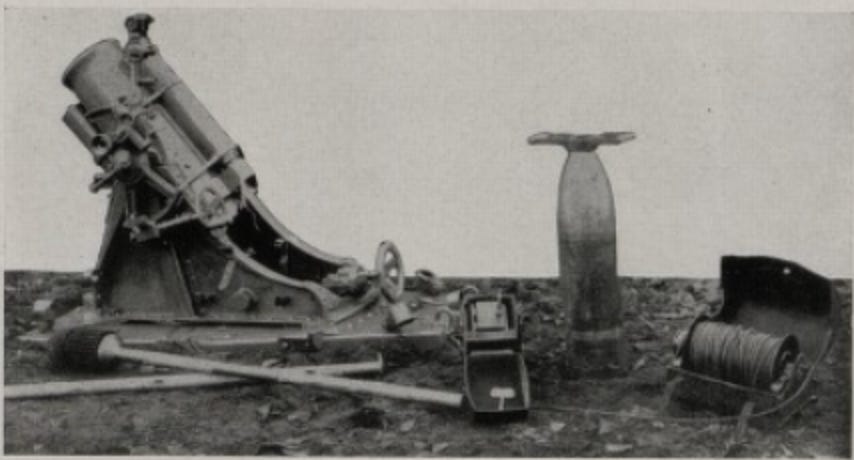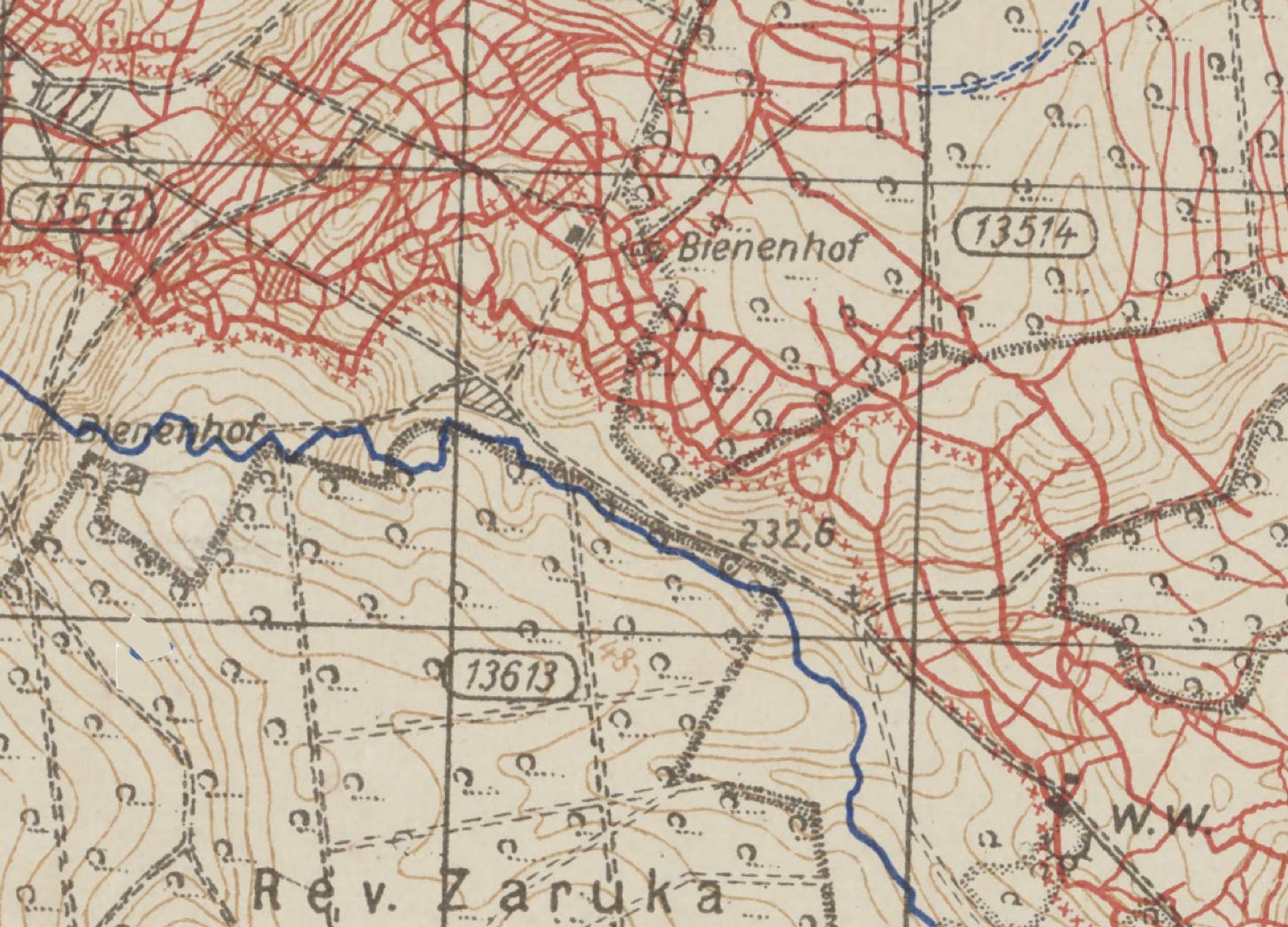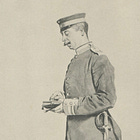The Cliff
Diary of a Stosstrupp Leader (Part 12)
This post continues the translation of the diary of a German soldier who fought in the First World War. Readers can find links to other posts in this series in the following guide.
14 December 1916
As Deputy Officer Wennemann had gone to a machine gun course, I took charge of the platoon.
In the evening we moved into Sector B II a. This turned out to be an unusual position. It lay on the forward slope of a steep hill. In two places, the floor of a position took the form of steps (running the length of the trench).
In front of the fighting trenches lay the B-and-A Hollow (B. und A. Mulde), a place where a man could take a stroll without being bothered by hostile rifle fire.
In the direction of the Russian, the hill ended in a cliff. Towards the edge of this cliff, we placed five two-man listening posts and one observation post (Tagesposten, literally ‘day post’).
Two draws ran, at right angles, into to the hollow. My platoon commander’s shelter could be found in one of these. A ‘hundred-pound’ Minenwerfer, what we called a Maruschka, had been installed in the other. (This seems to have been a 17cm medium Minenwerfer, which had been built to fire ‘mine’ that weighed a little more than fifty kilograms.)

In addition the two-man observation post in the trench and the five two-man observation posts, all of which served to surveil and secure the entrances to the hollow, we placed two men on a rise that we called Rudloff Heights and sent out a wire patrol to watch over our wire obstacles, which were good and strong, and to maintain contact with individual listening posts.
During the night, a clump of earth fell on Sergeant (Unteroffizier) Hirth, crushing him and causing shock. I suspect that it had come loose as a result of the freezing of the ground beneath it.
15 December 1916
Senior Sergeant (Vizefeldwebel) Altmeyer joined my platoon as the replacement for old Sergeant Andres.
16 December 1916
It was foggy, so much so that we kept the night watch on alert until nine in the morning. Then it rained, and rained, and rained.
to be continued …
Illustrations
The map at the top of this post dates from March of 1917. The blue lines represent the forward edge of the German position. The red lines depict Russian trenches. The German word Bienenhof means ‘bee farm’.
The photo of the medium Minenwerfer comes from the second volume of Hermann Schirmer Das Gerät der schweren Artillerie vor, in und nach dem Weltkrieg (Berlin: Bernhard und Graefe, 1937).
Source
The text comes from Alwin Lydding Meine Kriegstagbuch (My War Diary), unpublished manuscript, Bundesarchiv (German Federal Archive) N 382/1
For Further Reading






